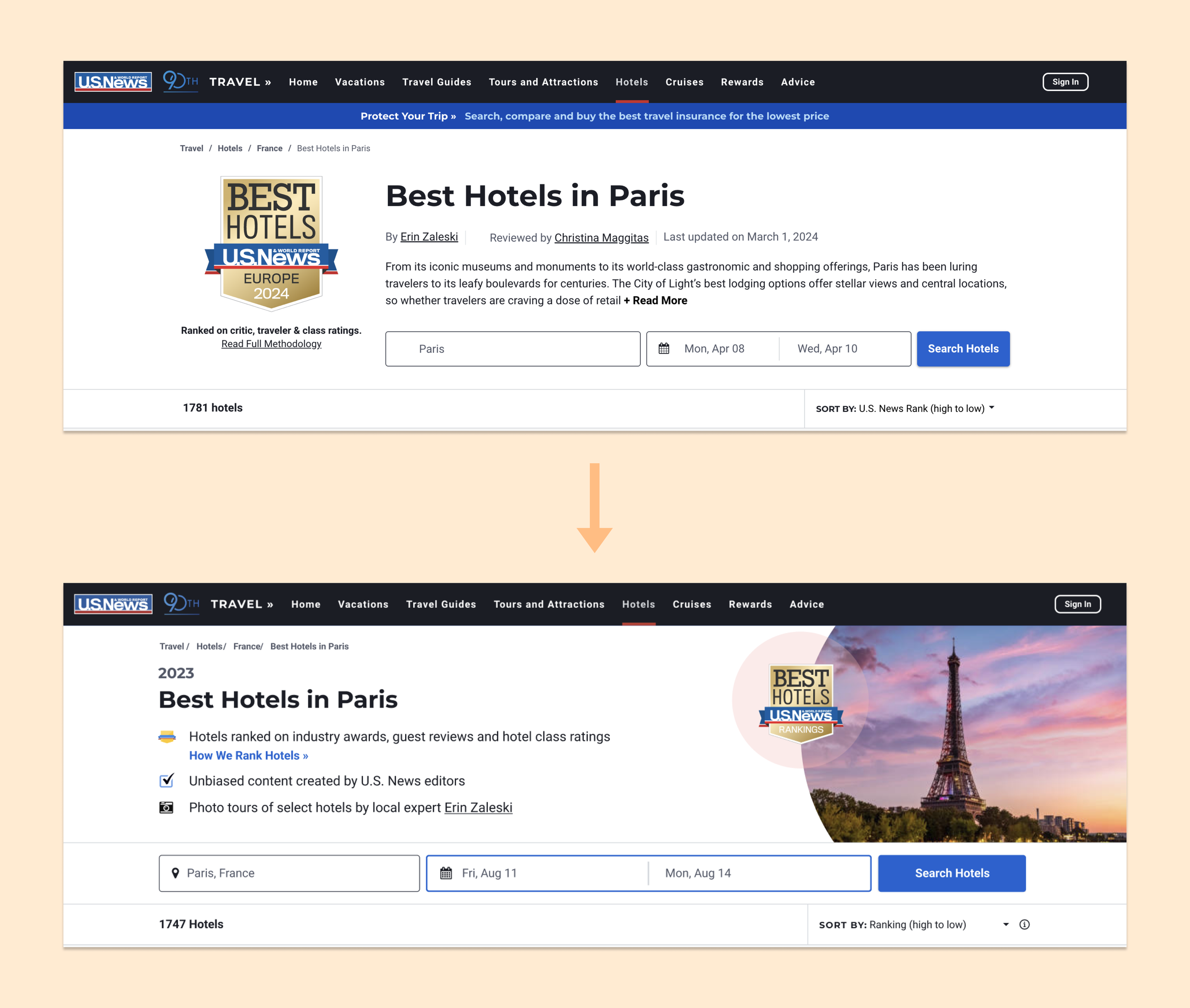KEY TAKEAWAYS
A Holistic Approach to User Experience and Conversion Funnels
Funnel Blindness
One key lesson from this project was the importance of looking at the entire user journey rather than fixating on a single metric. The product team was focused on driving clicks on the card’s button, while other important conversion funnels, like the map view and hotel profile pages, were overlooked. Users don’t always follow a linear path to conversion, and optimizing one button doesn’t always lead to the best outcomes.
The Button Dilemma
At one point, I was asked to simply make the hotel card button larger to drive more clicks - an oversimplification of user behavior. While it might have driven more clicks initially, it wouldn’t have addressed the underlying issue of user intent. Instead, we should have looked more holistically at improving all touchpoints users interact with, not just the hotel card button.
Creative Problem-Solving
Despite the frustrations, this project also highlighted the importance of creative thinking. By leveraging U.S. News’s editorial content and redesigning the hero section, we were able to better differentiate ourselves from competitors like Booking.com. While the results weren’t perfect, the project offered a valuable lesson in balancing brand constraints, user preferences, and business goals.
Conclusion
While the final results were mixed, this project provided valuable insights into the balance between user experience and business objectives. I learned the importance of looking beyond surface-level fixes, and thinking more holistically about how users interact with multiple parts of a page.




